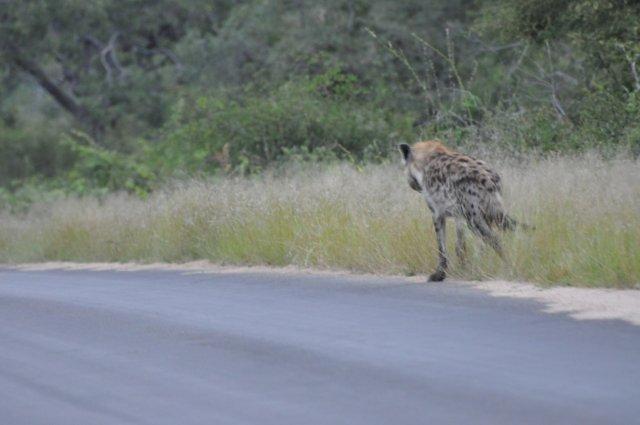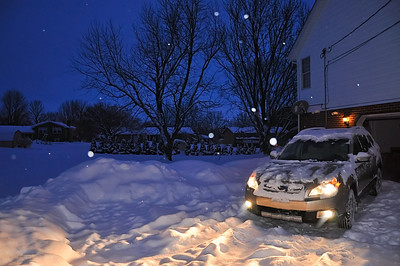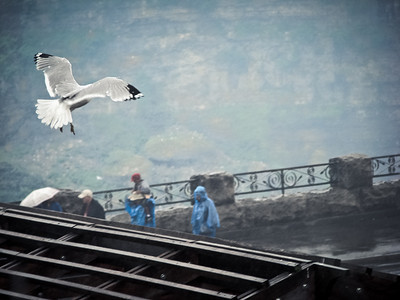Taking a Better Photograph
Today via the internet there is a tremendous amount of information on photography. The basics of photography that address ISO and depth of field are the main things you need to learn if you want to experiment with taking pictures, or even get the best shot possible. No great picture was created without the help of some tricks. Those used to be done in the darkroom, and now they are done with software applications that can enhance your pictures and make them look better. Find the software that fits your needs and budget, and start creating.
I have blogged about the rules of thirds and am aware of the Golden Mean. The problem I have with the rule of thirds is on how it is sold and not on what it is. It is simply an idea that helps you think about composing the picture. The concept that if my eye isn't located in a certain spot the picture isn't as good is absurd. Are all pictures meant to please you, or are they sometimes meant to do the opposite? The famous picture of the execution of the Viet Cong officer is an example. I don't want to link to it here because of the emotion that it brings, but you can Google it. The picture, taken by Eddie Adams, captures a moment in time that is unsettling, and I am sure that he wasn't thinking about Fibonacci's ratio when he took the picture. It is powerful because you know what is about to happen, and for no other reason.
So, all of these ideas/concepts are OK, and you can think about them as you compose your pictures, but believe me there are more important factors than Fibonacci's ratio. What are they? Well let me explain what I do.
Why am I taking the picture?
When you pick up your camera there has to be a reason why you are taking the picture. What is it? Is it a picture of your friends that you want to capture, or is it a picture of an activity with your friends like mountain climbing? A lot of the rules and theories are based on one picturing telling the whole story. Typically that isn't what most of us do. We have a series of photos that tell the story, or recall the memory. A great photographer might be able to combine these things into a single picture, and that is when you have worked some photo magic. If you want to capture the calm and soothing affect of a fresh falling snow, you don't want a picture with a car zooming by. It is all about symmetry and you might need to use your photo editing software to resolve symmetry issues (remove a discarded can from an otherwise perfect nature scene).
What will be in the picture?
If you know why you are taking the picture then that will help you know what should be included in it. If you are taking a picture of your wife then you do not want anything to distract from her picture. You don't want to show someone the picture and they ask "Wow, who is that other girl in the picture?". "Well the rule of thirds said I should place her to the side of the photo and I guess I didn't notice the other person". Your wife isn't going to buy that one. It is all about framing the picture properly.
If I am showing a critter in the wild I don't want a car or house in the picture. I want people to think of a more natural habitat, rather than your garbage can being raided by the late night raccoon bandit. To accomplish that I might have to compose the picture which breaks some golden rule and I say, so what.
Is there a theme, should there be?
Is there some other theme to the picture that you are trying to show or should there be? In my blog I discussed I was taking pictures of the fall colors and when I took a picture of the squirrel I made sure the theme of fall colors followed through on it as well by showing a lot of the orange and yellow leaves of the tree the squirrel was in.
What is the picture about?
Is the purpose of the picture to show a beautiful beach, the beauty of a snow covered forest or the harshness of a bitter cold day? The editing software you use can help you achieve those feelings. Don't be afraid to alter the picture to give it a new look. Remember no one wants to see boring pictures. There are thousands of pictures on the net of The Grand canyon, what makes yours better?
Get Started!
There are other ways to present the above using simple words like framing and composition, but what I have tried to do is walk you through the process I follow. I always want my pictures to be interesting and the various rules can help you think about what you are doing, but it really is about taking the picture and learning what you like, what others like and where your strengths and weakness are. Don't be too quick to discard a picture you don't like. I sometimes turn those pictures into great pictures by experimenting with my editing software. Boring can become glamorous once you start thinking out of the box.
.
A grunge, edgy look to the gull photo isn't too bad these days and has an interesting feel to it.
I hope I have provided you some information that was useful. In the end what helps you get better is to take a lot of pictures and learn your camera and its controls. Don't buy into internet sites telling you what is good or bad. Take them with a grain of salt. If you take a lot of pictures you will end up with some good pictures. If you show only your best photographs people will think you are a great photographer.






